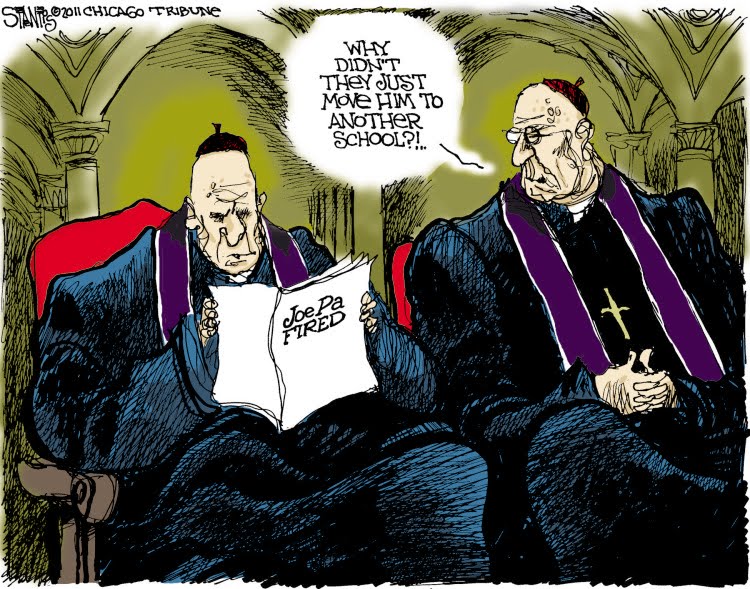Some 200 Catholic priests suspected of sexual abuse are living undetected in communities across California, according to an attorney who represents hundreds of plaintiffs who sued the LA Archdiocese alleging molestation they say was inflicted on them by priests and clergy of the church.
 Ray Boucher has mapped 60 locations where suspect priests live, in cities and towns from northern to southern California, and provided those locations to NBC4 exclusively.
Ray Boucher has mapped 60 locations where suspect priests live, in cities and towns from northern to southern California, and provided those locations to NBC4 exclusively.
“Many if not all these priests have admitted to sexual abuse,” Boucher said. “They live within a mile of 1,500 playgrounds, schools and daycare centers.”
Since none of the priests has actually been convicted of sex abuse, none can be identified under Megan’s Law, or their whereabouts revealed in related public databases.
“What the issue is here, is how you weigh the right of the people,” said Boucher, who is also one of the attorneys representing students in the Miramonte Elementary School sex abuse scandal. “In particular the right of children to be protected from molestation versus the right of privacy.”
‘Public is often too squeamish’
Among Boucher’s many clients in the church action are Manuel Vega and Dan Smith.
Vega is a former police officer from Oxnard who took special interest in sex crimes investigations because, he says, he was sexually abused as a teenager by his parish priest.
“He forced me to masturbate while he took pictures of me,” said Vega, who believes that the public is often too squeamish to recognize what child molestation actually entails – and thus not properly outraged by it.
“When we talk about sexual abuse we’re talking about sodomy,” he said. “There’s pubic hair, there’s sweat, there’re smells, there’re grunts.”
Dan Smith, another alleged abuse victim, is reeling from the recent collapse of his marriage which he blames in part on the psychological effects of the molestation he says he suffered as a child – at the hands of his local parish priest.
“He would rape me and then say this is what God’s love feels like,” Smith said, struggling to hold back tears more than twenty years after the alleged incidents.
Both men helped make legal history by joining 500 other plaintiffs in suing the LA Archdiocese for sexual molestation, with Boucher as their lead attorney.
In 2007 the LA Archdiocese reached an unprecedented $660 million settlement with many of the plaintiffs without admitting any wrong-doing.
It also agreed to let the courts decide which of the case-related church files should be made public, including those identifying alleged and admitted predators.
But according to Boucher and court documents, the Catholic Church has since engaged in a cover-up. By Boucher’s account, church officials allowed priests suspected of sexually abusing children to retire, flee the country or hide in rehab clinics until the statute of limitations on prosecution ran out.
“What the church did is take these guys and send them off to facilities where they treat pedophile priests without ever alerting police,” Boucher said. “By enabling these priests to be hidden for so many years the church protected them from being prosecuted.”
Priests’ attorney: ‘That’s not fair’
Meanwhile legal disputes delayed the release of the promised personnel files, and Donald Steir, an attorney for several priests, went to court to argue that those who’ve been accused but not convicted should have their names and privacy protected.
“They are being punished as if they have been convicted, or at least that’s the desire – to punish them,” Steir said. “That’s not fair.”
“It’s difficult if you represent an alleged terrorist or a pedophile, because people don’t really care about the rights [including privacy rights] for these type of people,” Steir said. “But once we erode the rights of a group of people we don’t like, we effectively have started down a path where other people’s rights can be similarly denied.”
The courts, expressing concern for children, overruled most of these arguments and similar ones by the Archdiocese, which declined to comment for this story.
And a judge has ordered release of some personnel files, set for some time in the coming weeks. But he also credited the church for its increased sensitivity in dealing with molestation cases and decided to withhold the names of church officials who handled the earlier cases.
It is a ruling that reminds Boucher of the breakdown in accountability in the Penn state pedophile scandal.
“Look at Penn State and see how important and significant it is when people in authority enable sexual abusers to continue,” Boucher said. “That underscores how significant it is to get these names out.”
Under the judge’s ruling the church can also keep secret, subject to further court review, the names of priests who have not been convicted and who have only one or two allegations against them or have allegations disputed by the church.
To Smith that seems like a formula for further cover-up by church officials.
“If their interests were to protect the kids, they would have released the documents,” Smith said. “As a parent not knowing who your neighbor is — that is really scary.”
Many of these unidentified priests are included in Boucher’s location map.
“The danger,” said Vega, “is that you have a person who has this sickness in them who is amongst the children.”
The plaintiffs in the church scandal are planning to appeal the latest rulings to assure broader disclosure of suspects’ names and locations. But Boucher warned this could take time, allowing suspects to keep their privacy protected, as well as their undetected presence in neighborhoods across California.
Complete Article HERE!
